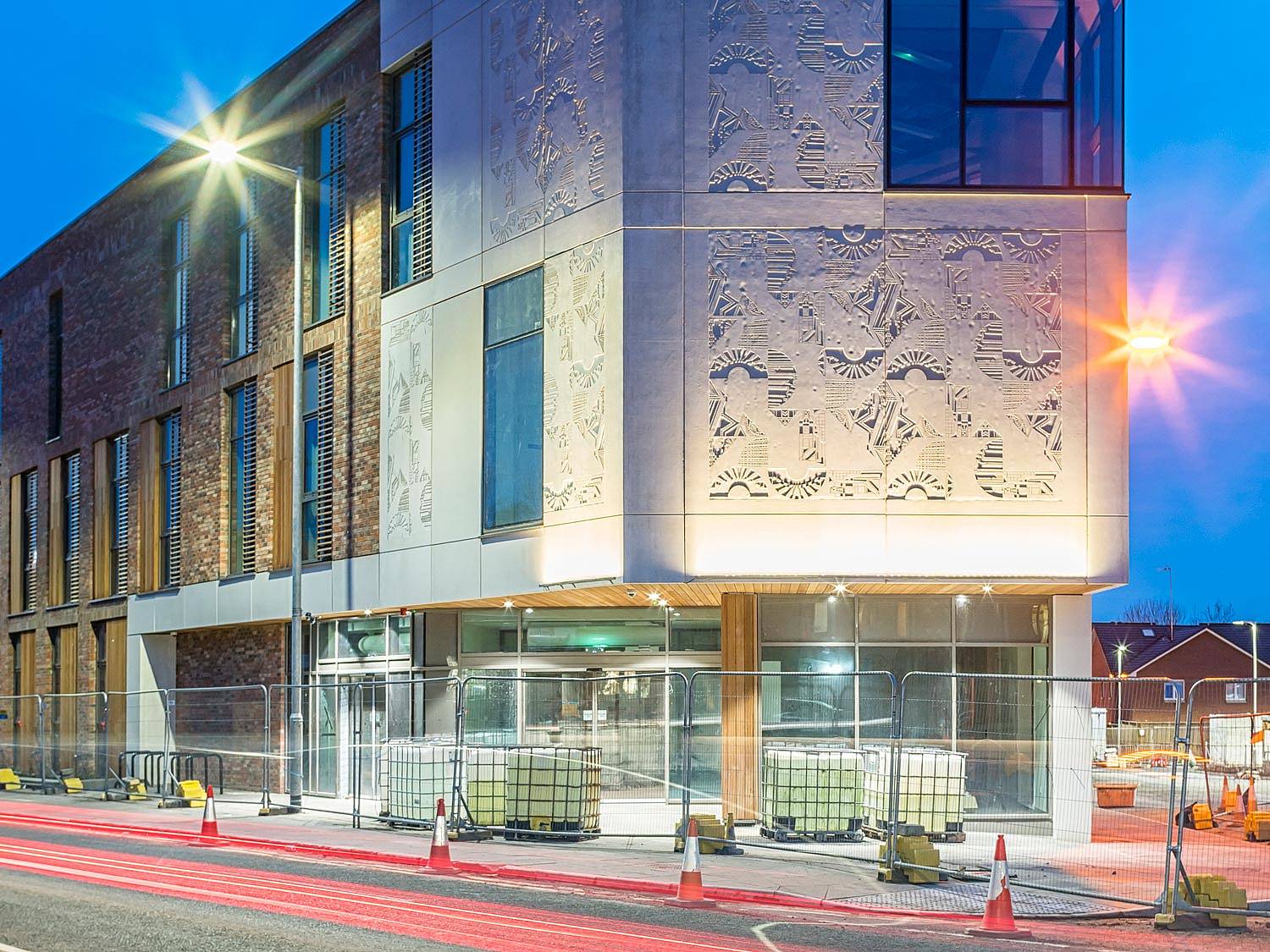Woodside Health Centre, Glasgow, Scotland
When it came to designing the Woodside Health Centre in Glasgow, the designers turned to the people. Inspired by the things that are important to residents, the design is full of local references.
The Woodside Health Centre, a community medical center in Maryhill, Glasgow, opened its doors on July 1st 2019. The center combines medical care with a center for addiction support and a day center for the elderly. These three services are accessed from different sides of the building. The architects and designers wanted to make the different uses visible from the outside by using different designs. Bespoke Atelier, a design studio based in Glasgow, created a repeating design element that harmonically brings all three designs together.
In its designs, Bespoke combines influences from interior design, public art and architecture. In order to really anchor the center in the community, the team turned to the locals themselves: Maryhill in Glasgow has a multicultural population. Inspired by fabric printing techniques popular in several Asian cultures, the team held workshops with participants from China, Pakistan and India.
Three topics arose from the workshops and the art created: local industrial products, flora and fauna and architecture. As a combining element, the professionals came up with a geometric design in which the various motifs could be embedded. They show the flora and fauna along the local towpath, where boats used to be towed along the water. The second design is a reference to products once made at the breweries and mills along the nearby canal. A local church and cinema form part of the architectural motif. The modular patterns can be turned in any direction to create a larger composition and interesting pattern combinations.
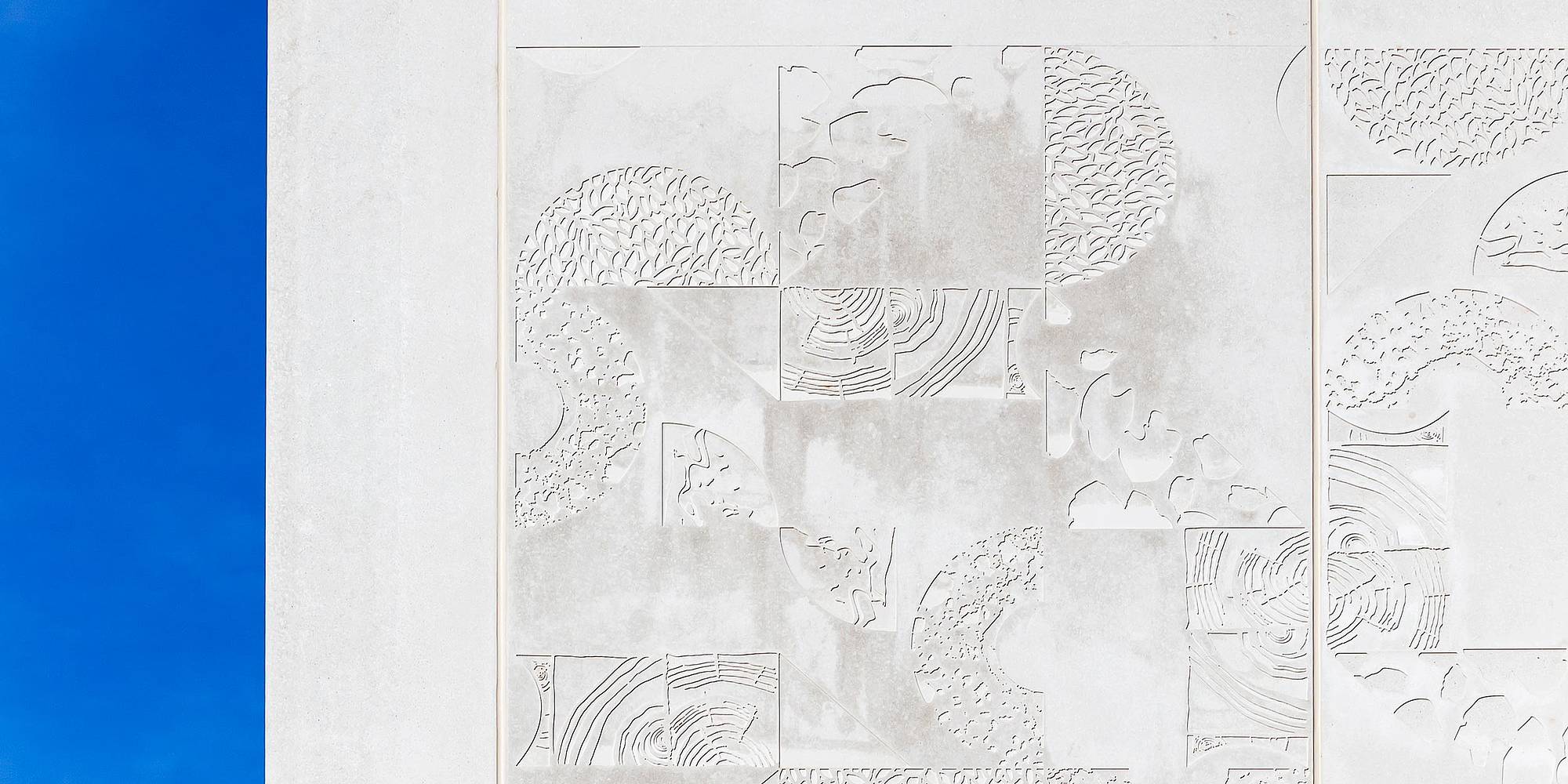
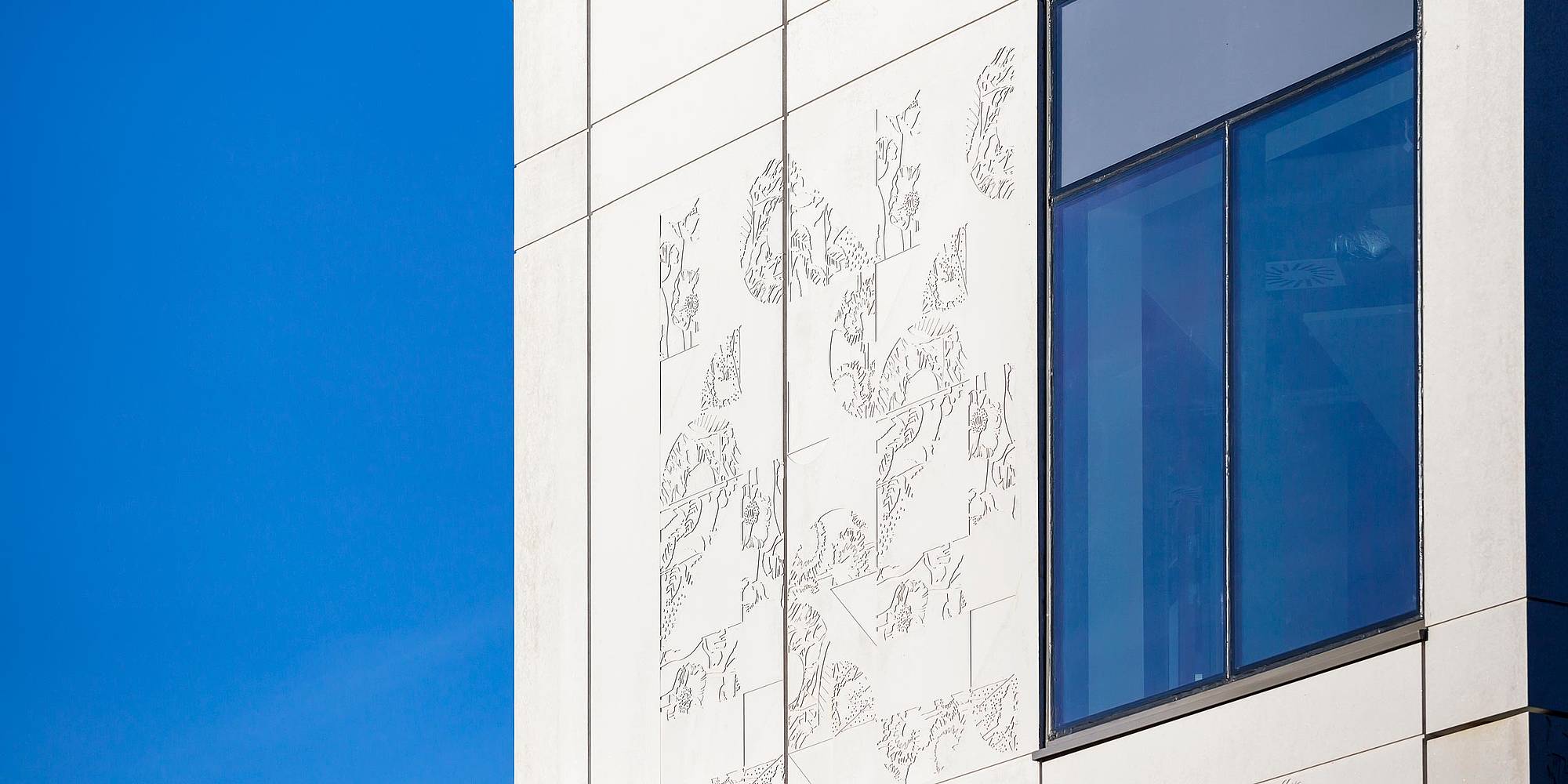
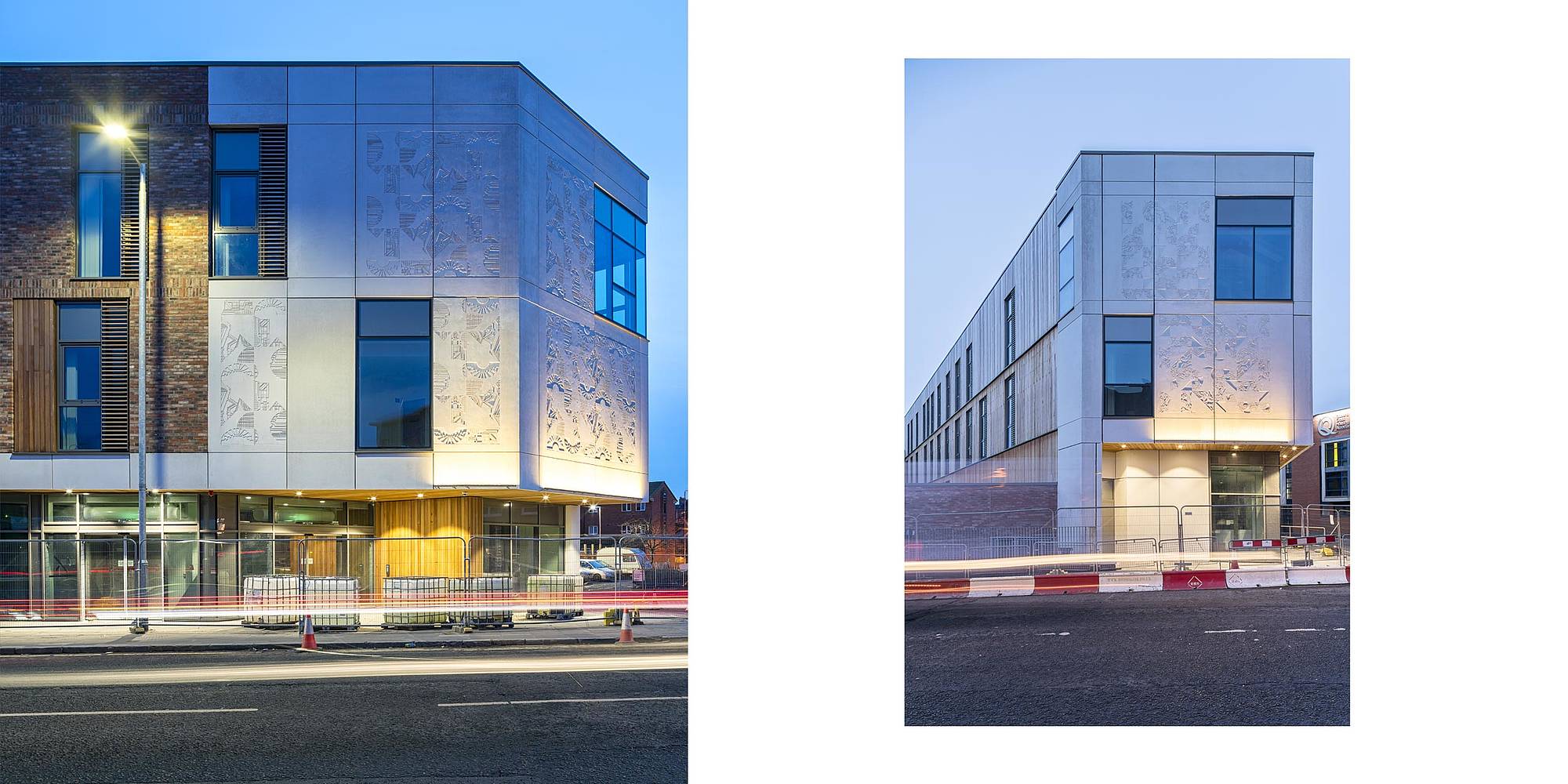
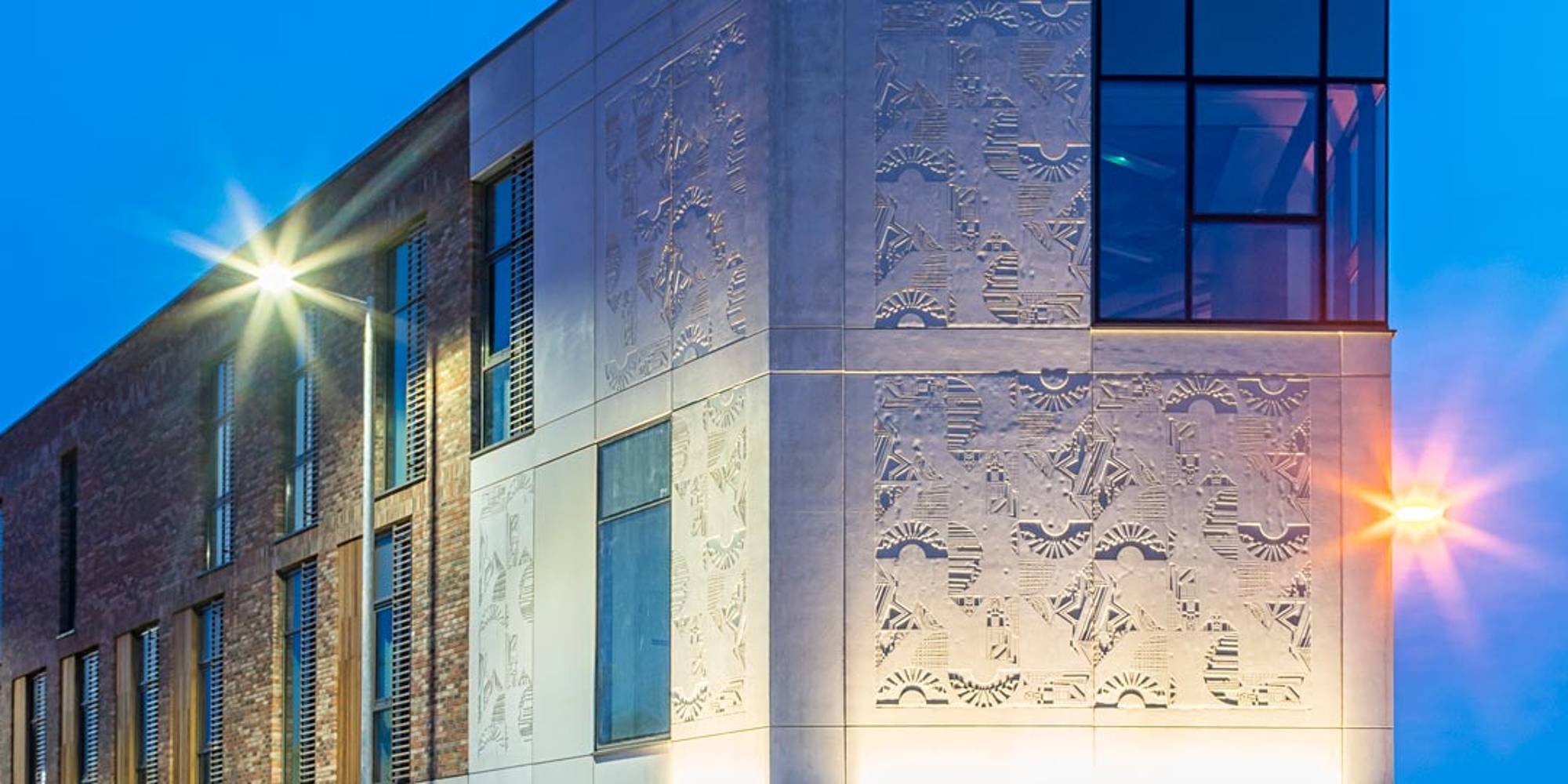
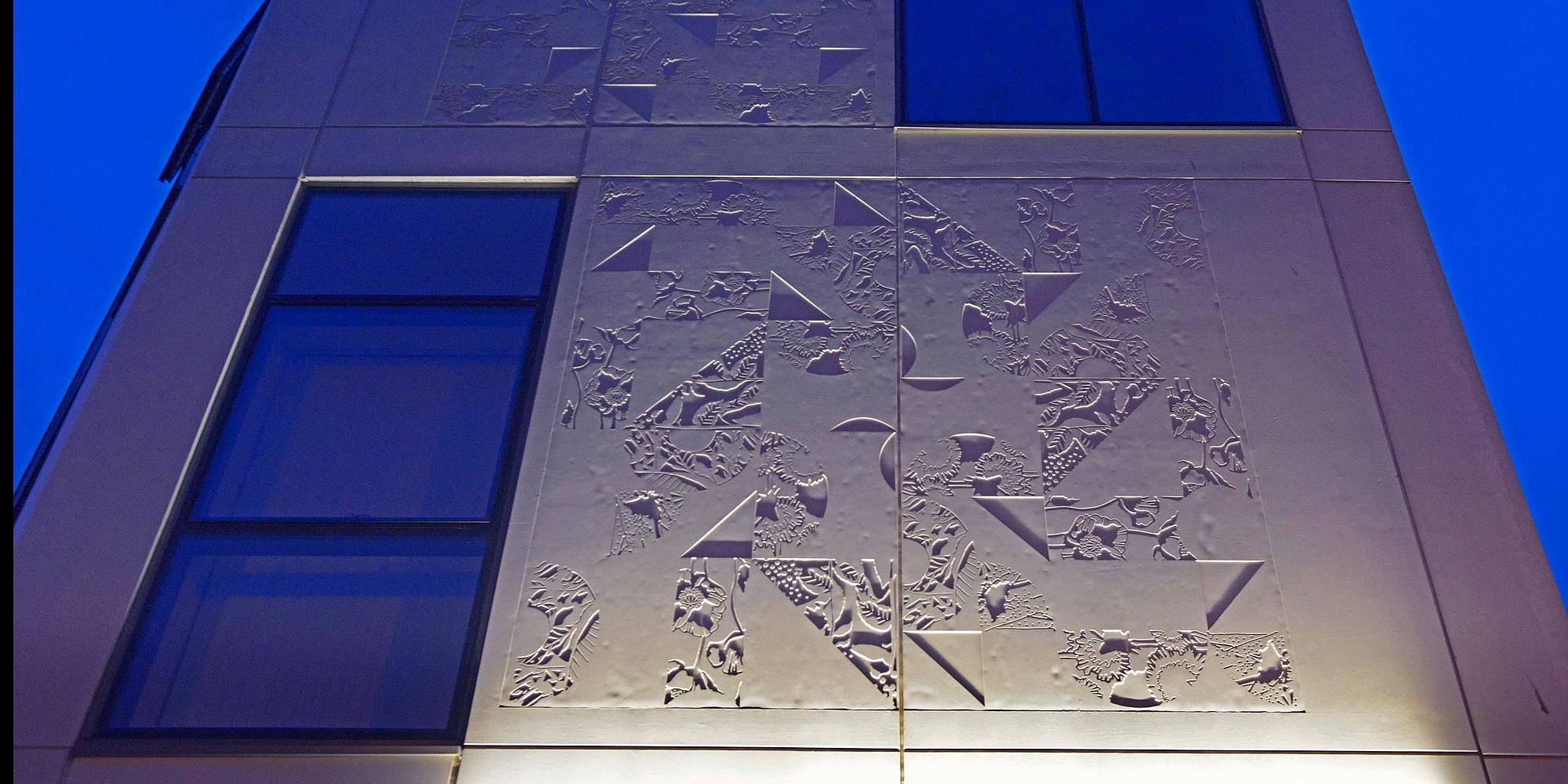
“We have applied our patterns to façades using routing or painting, but never with formliners and concrete,” said designer and Bespoke director Marion Parola. The fact that the formliners are reusable was ideal for the designers’ needs, as they used the pattern in a modular design: by turning the formliners and arranging them differently, the key motif was repeated on the façade in a varied way.
Once the design was finalized, Bespoke worked closely with British RECKLI partners Wayne Sewell and Joe Russell. They explained to Parola and her team how they could use elastic formliners for each motif in detail. “The formliners reproduce very fine details but there was of course limitations in how fine we could go. We did enlarge and simplify our artworks but overall the designs have benefitted from being refined,” says Parola.
Finally, the designs were sent to RECKLI in Herne, where in-house joiners first created the positive models. The models were then used to pour formliners for the three design surfaces. In total, seven formliners with dimensions ranging from 600mm x 3300mm to 2250mm x 3400mm were created.
The formliners were sent from Herne to the Plean Precast plant in Stirling, Scotland. Although the designers at Bespoke didn’t make it to the factory in Herne, they visited Plean Precast several times to familiarize themselves with the precast element production process and to examine the finished concrete parts. A little later, they saw the precast elements approved for use in the finished façade. “It’s a great technique that is subtle enough as tone on tone and still very striking as you obtain lots of details.” Parola is very satisfied with the result and wants to embark on more projects in the same vein after this initial success: “Looking forward we would love to work on a new project where we can create designs with a variety of depth.”
